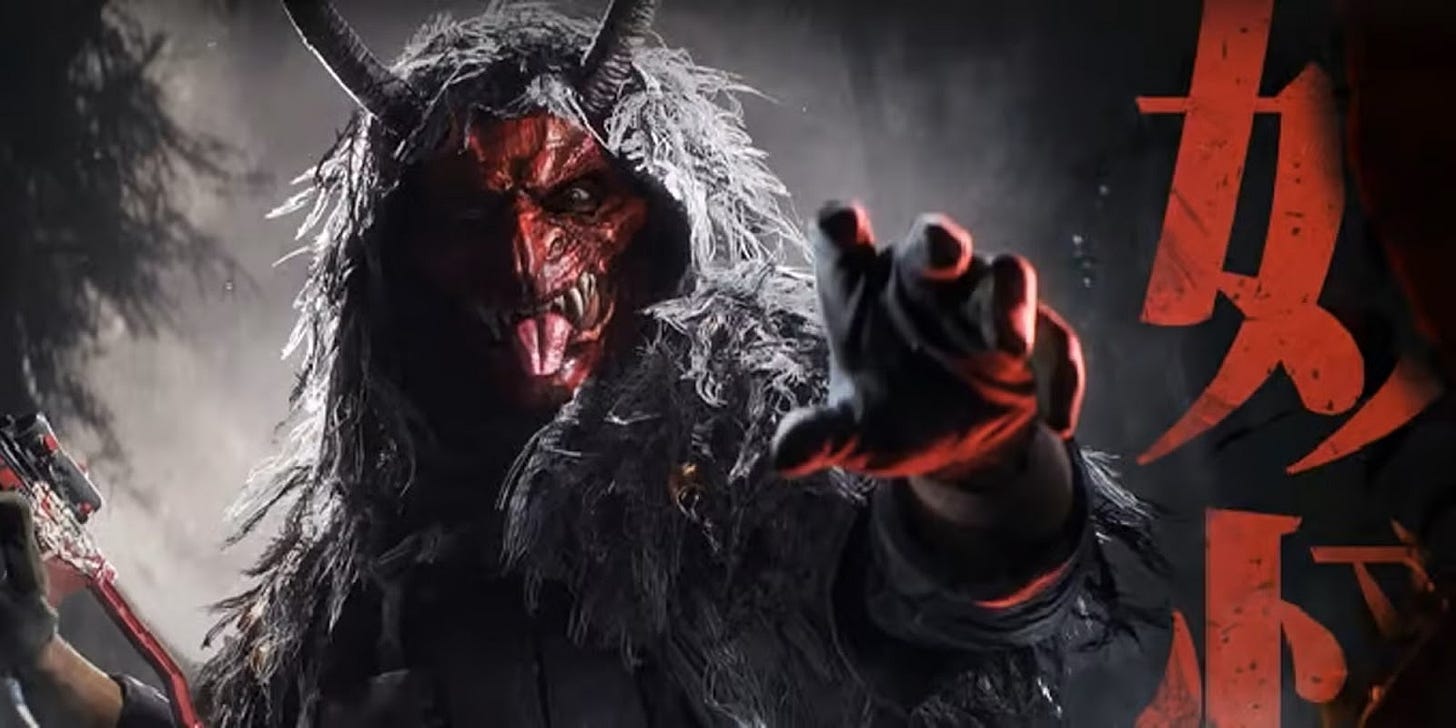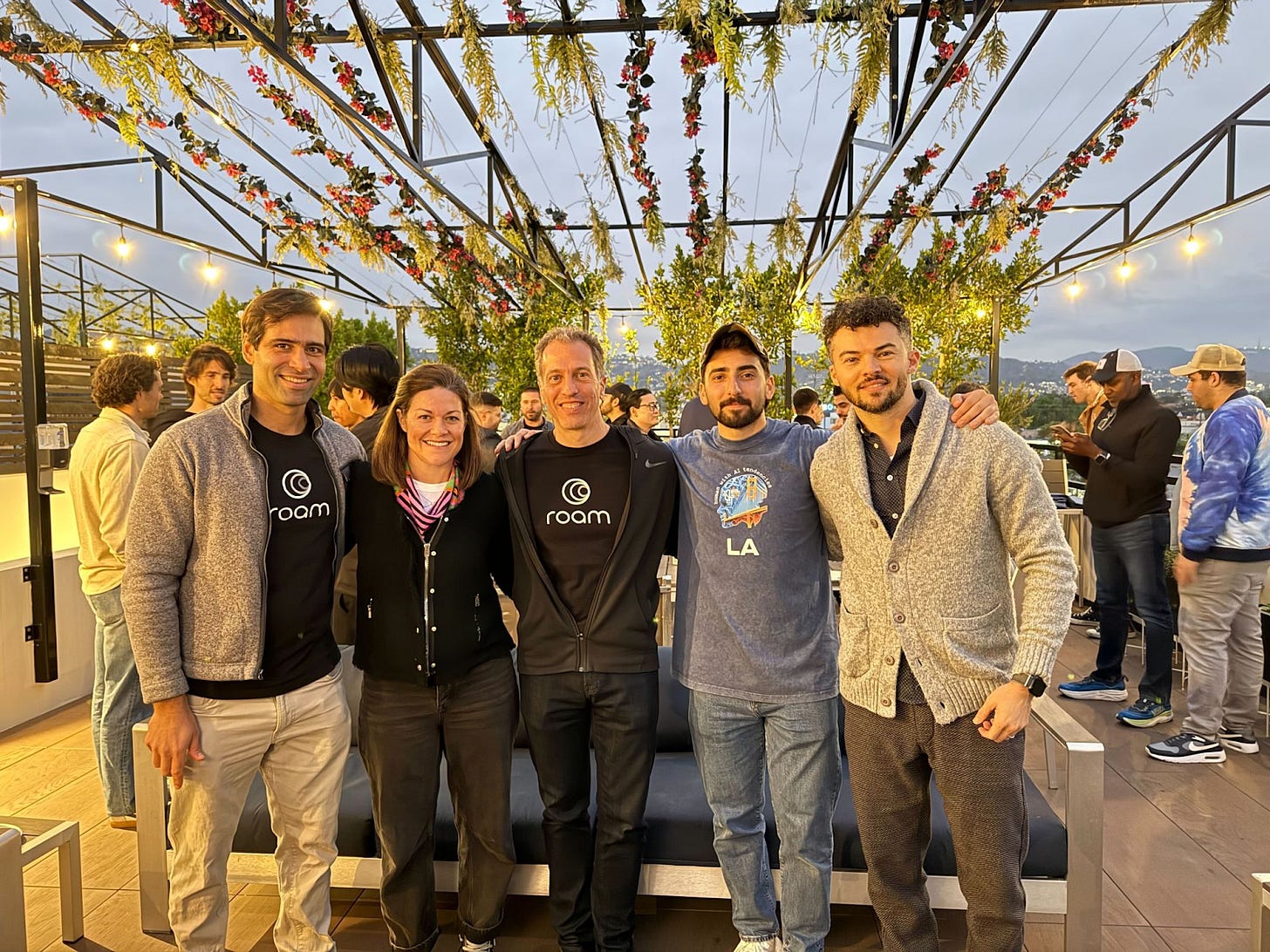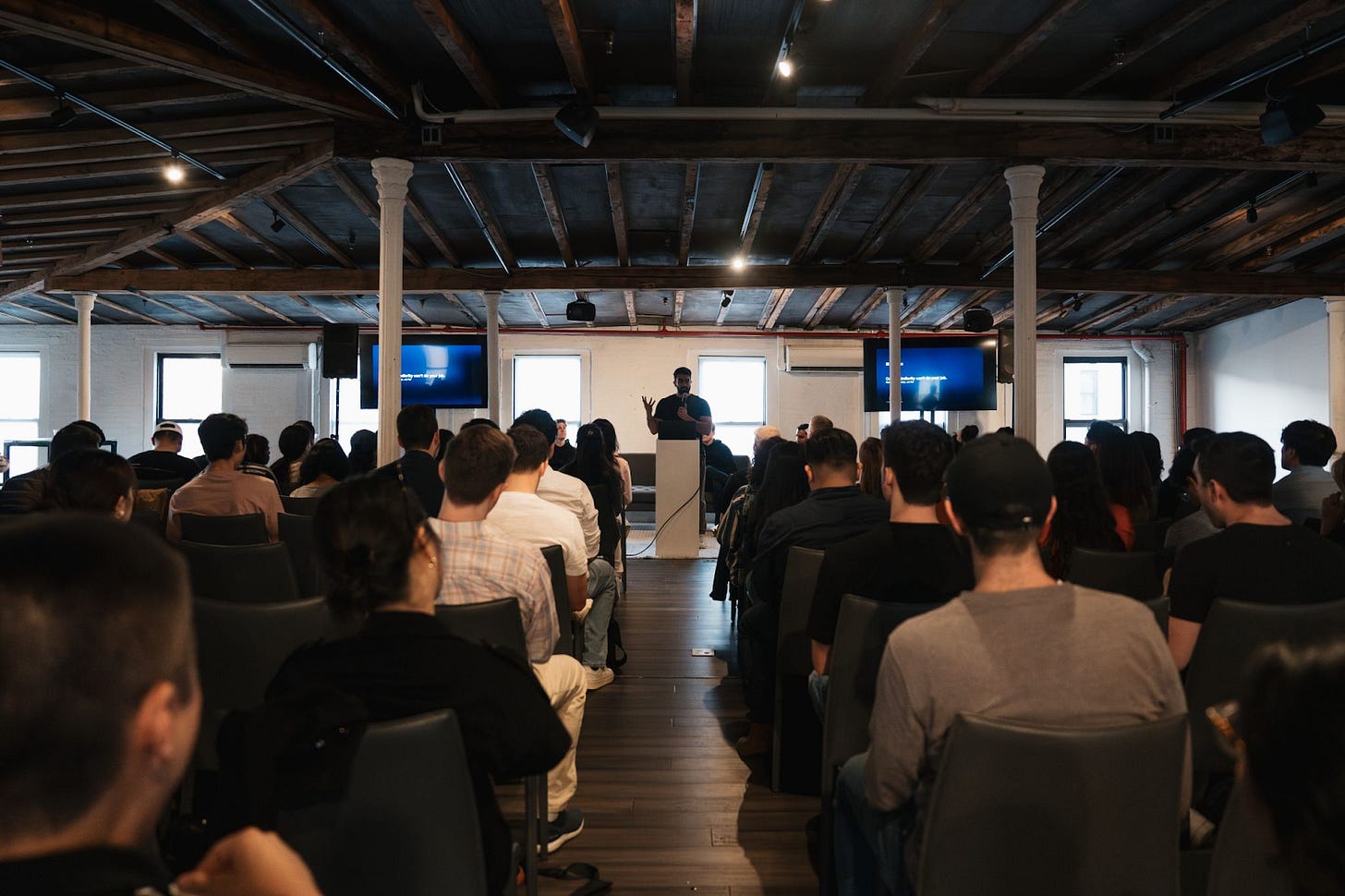Upcoming Events
🌁 SF Bay Area
Thu, May 15th: 🧠 GenAI Collective 🧠 Enterprise AI: The Agentic Shift | Featuring SAP + Moveworks
[EXCLUSIVE ⭐️] Tue, May 20th: Frontier Founders Dinner
Thu, May 22nd: 🧠 GenAI Collective 🧠 AI Startup Growth
Wed, May 28th: SF DEMO NIGHT 🚀 (w/ The GenAI Collective)
🗓️ Hungry for even more AI events? Check out SF IRL, MLOps SF, or Cerebral Valley’s spreadsheet!
🌲 Portland
[LAUNCH 🔥] Thu, May 15th: Portland Launch Party
☔️ Seattle
Tue, May 27th: Seattle Demo Day – ROAM
🇨🇦 Toronto
Tue, May 13th: FinTech + AI | FinTech Community Talks on AI
🏛️ Washington DC
Thu, May 22nd: Inbox Intelligence: GenAI x Notion Mail Series – Part 1
Creative Control and the Rise of AI in Game Design
Guest Article by Rob Alvarez
At the 2025 Game Developer Conference, Meta introduced access to its powerful Generative AI tools via the Worlds desktop editor. New features like Mesh and Texture Generation allow developers to prototype, iterate, and build immersive mixed reality and mobile experiences in hours instead of weeks.
Some of the benefits of using AI-generated assets in video games include:
Procedural generation creates huge, dynamic environments in minutes.
Style replication enables studios to cut level design time by more than half.
Hybrid workflows combine automation and human curation, x3–x5 asset production velocity.
Major franchises are already incorporating these tools. Activision/Blizzard notably used AI to produce weapon skins for Modern Warfare 3, blending supernatural elements from Japanese folklore with the game’s established military design. The Yokai cosmetic bundle was “created at least in part using AI,” offering a glimpse into how AI can assist in large-scale asset production.

The reception has not been universally positive. Square Enix's Foamstars received criticism for its use of Midjourney generated album art. Gaming platform distributors like Steam have begun rejecting games that use AI assets unless the creators can prove ownership of training data. These developments unearth a dilemma and a practical question: Who is the creator, and what constitutes original work in the age of AI?
Historical Rhymes in Art & Innovation
Before its art form was accepted, photography was dismissed as “mechanical reproduction.” In the 1980s and 1990s, digital creations made with software like Adobe Photoshop were considered “non-original.” AI-generated content is receiving similar treatment, though it is now beginning to be treated as a standard creative input in many workflows.
In 2023, a federal court in Colorado refused to grant copyright protections for artist Jason M. Allen’s award-winning image, which he created with Midjourney, called “Théâtre d’Opéra Spatial.” The court found: “If all of a work’s ‘traditional elements of authorship’ were produced by a machine, the work lacks human authorship, and the Office will not register it.” This case shows how legal frameworks are being tested as authorship, originality, and human involvement are redefined.
These tools are evolving faster than the frameworks that govern them. But for creators like me, the benefits of using AI in art are incredible. Platforms like Runway allow users without formal training to create high-quality videos and visuals within minutes. For professionals, AI generates concept drafts and variations based on prompts or original sketches. Critically, the outputs expand creative possibilities and shift where authorship begins. (I saw this firsthand while using Runway 1.0 for video storytelling.)
Creative work is shifting from manual execution to decision-making, judgment, and editorial control. Artists and designers can now use AI to accelerate early-stage ideation and production, then take over to finalize work.
Co-Creation: Human Creativity and AI
At EA, I worked with The Sims 4 production team. The Sims has always been a pioneer of diversity and inclusion. When I joined, generating new accessories and items took weeks, sometimes even months, to develop the concept, prepare, review, iterate, and present for review before being approved.
Adding AI to the creative process might look like this:
The Creative Process: Designers can use AI to generate visual ideas from simple prompts, such as cozy Scandinavian wall art or retro-futuristic earrings. Artists then refine these concepts, making them uniquely "Sims."
The Human Touch: What makes The Sims content special is the personal touch each Artist brings. Even if AI helps with initial designs, the Artist would shape the final assets by making adjustments, allowing them to focus on the creative process.
Community Collaboration: Imagine players using an in-game AI tool to mix patterns or generate stylistic ideas for clothes, furniture, etc. They could submit favorites for creators to polish, fostering a sense of community, especially during cultural moments such as Pride, cultural festivals, etc.
Responsible AI Usage: Using AI trained on licensed content that respects original artists is important. Transparency is key, and players should be aware of whether AI was involved and appreciate the artists and designers who created early drafts into polished content.
By thoughtfully integrating AI as a creative collaborator vs. a replacement, studios can unlock efficiencies and creative possibilities while preserving what makes their work unique.
The Artist, the Studio, and the System
Artists integrating AI with art design require a different approach. They must train themselves in software applications for AI rather than practiced skills, bringing issues with agency in terms of creating something new. They also need to protect the identity and originality of their artistic vision. Regulators must adjust laws to preserve artists rights as technological innovation expands. Like all previous artistic revolutions, AI art will no doubt land its own place in the creative ecosystem.
Events Spotlight

🌆 Los Angeles: AI Founders Rooftop Happy Hour with Roam
The Collective and Roam hosted an evening of connection and conversation high above the Los Angeles skyline. This invite-only gathering brought together AI founders, builders, and operators to exchange hard-earned insights, share early-stage challenges, and spark new collaborations in an environment designed for trust and candor.
Discussion groups helped surface common questions around fundraising, technical strategy, and early traction, while open networking led to a mix of new partnerships and continued friendships. The atmosphere reflected the strength of the LA ecosystem and a shared commitment to growing together. These kinds of gatherings are building the connective tissue for the city’s next generation of AI leaders.

🗽 New York: April Research Roundtable with Hebbia
Our April Research Roundtable in New York delivered a night of clarity and depth for researchers and builders navigating the edge of applied AI. Hebbia opened the evening with a live demo that revealed how their systems are transforming how teams work with complex information, followed by a behind-the-scenes look at their technical approach from Adithya Ramanathan.
Arkin Gupta of Morgan Stanley offered a grounded perspective on how AI is reshaping workflows in finance, blending theory with implementation. The event brought together a room full of people working to push past the hype and make meaningful progress. From technical deep dives to practical exchange, the roundtable affirmed New York as a place where research and product development move in sync.
Join the Community!
💬 Slack: GenAI Collective
𝕏 Twitter / X: @GenAICollective
🧑💼 LinkedIn: The GenAI Collective
📸 Instagram: @GenAICollective
We are a volunteer, non-profit organization – all proceeds solely fund future efforts for the benefit of this incredible community!
Join the GenAI Creative Studio!
The GenAI Collective is on the lookout for creative pros who are passionate about AI and storytelling. We need sharp, innovative minds to help shape our brand across social media, newsletters, PR, podcasts, and beyond. If you're ready to craft compelling content at the intersection of tech and creativity, let’s talk.
We are currently looking for:
Creative Director
Graphic Designers
Videographers/Editors
Photographers
Producers
Animators
Marketing Copywriters
While these roles are volunteer-based, the perks are big. You'll get exclusive access to all GenAI Collective events, connect with a cutting-edge AI community, and collaborate with a fast-growing team. Plus, every project you contribute to comes with a shout-out to our highly engaged audience of AI pros and industry leaders—giving your work the visibility it deserves.
If you're a creative professional eager to join a team of AI experts dedicated to building global AI communities and ready to have fun, contact us. This is an amazing opportunity.
Our Premier Partners
Premier Partners are values-aligned leaders who invest in the future of AI by supporting the world’s most vibrant grassroots community. We thank them immensely for their ongoing support! 😄
About Rob Alvarez
Rob Alvarez is a marketing executive and has spent his career working with both established companies and high-growth startups. His background includes product marketing and brand management for established companies and mid-growth startups. He enjoys hiking, home-roasting coffee, and playing video games. 🕹️
About Noah Frank
Noah is the co-founder of Aurix and has spent his career both working at startups and advising global leaders on innovation strategy. His work and body of research focus on AI policy, anticipatory governance, and effective decision-making. When not working to make emerging tech work for all, you can find him making music with his band. 🎸








